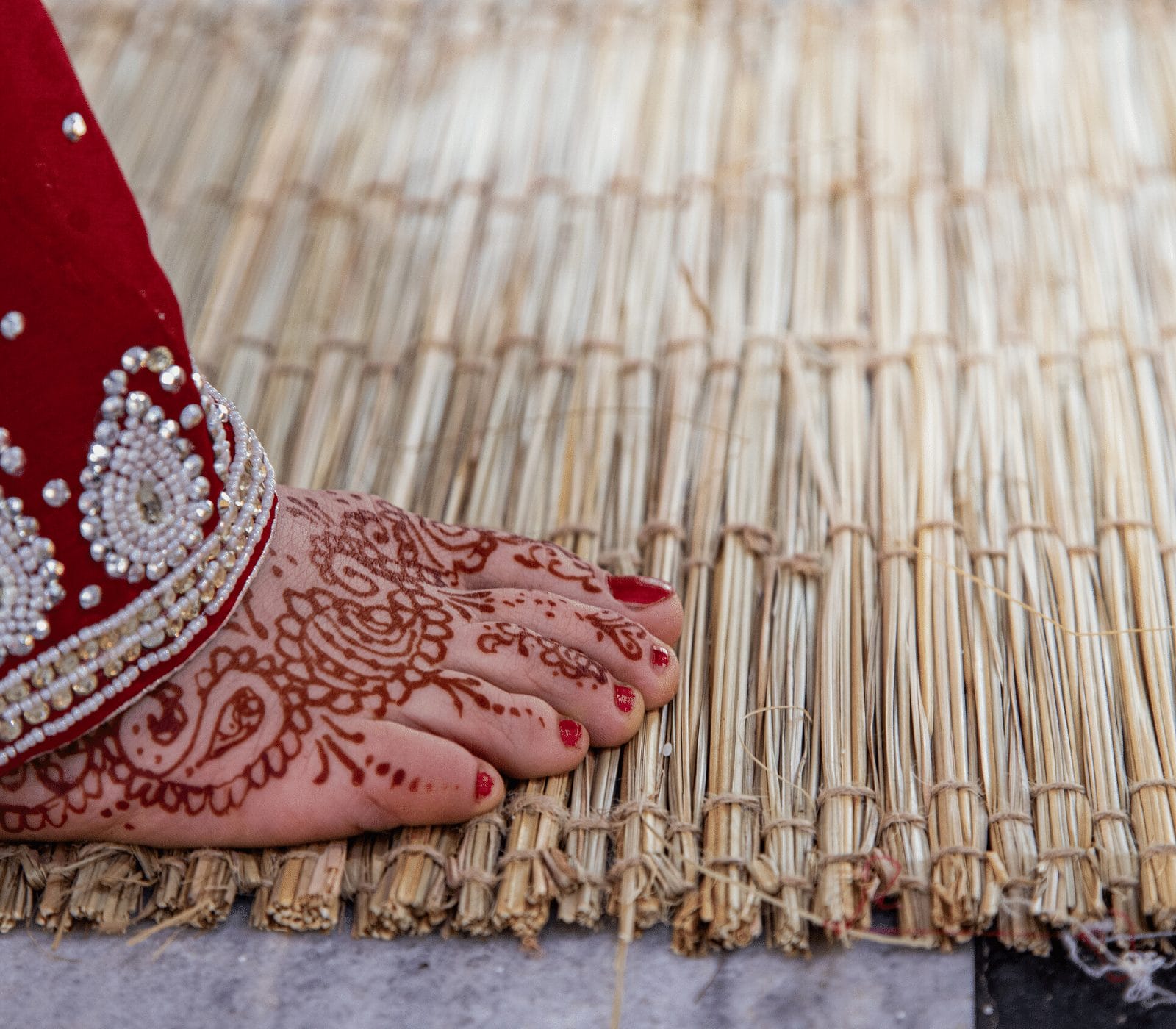Every Act a Ceremony – Everything is Sacred

The purpose of any ceremony is to build a stronger relationship or bridge the distance between our cosmos and us. ~Shawn Wilson
Every Act a Ceremony
By Charles Eisenstein, syndicated from gratefulness.org
I met a woman a few weeks ago who works with a Kogi mama, or shaman, from the Sierra Nevada of Colombia. He came to California a few years ago and performed extensive ceremonies on a particular spot of land. He said, “You’d better do a ceremony here regularly, or there will be serious fires.” No one did the ceremonies, and the next year there were forest fires. He came back afterward and repeated his warning. “If you don’t do the ceremonies, the fires will be even worse.” The next year, the fires were worse. He came again and issued his warning a third time: “Do the ceremonies or the fires in this part of the world will be worse still.” Soon after that, the Camp Fire devastated the region.
Later the woman found out that the spot the Kogi shaman identified was the site of a genocidal massacre of the indigenous people who lived there. He was somehow able to perceive that. In his understanding, a horrifying trauma like that affects the land in addition to human beings. It will be angry, out of balance, unable to maintain harmony until it is healed through the ceremony.
Two years ago, I met some Dogon priests and asked them about their views on climate change. Like the Kogi, the Dogon have kept ceremonial practices intact for thousands of years. The men said, “It isn’t what you people think. The biggest reason that the climate is going crazy is that you have removed sacred artifacts from the places where they belong, the places where they were placed with great deliberation and care, and removed them to museums in New York and London.” In their understanding, these artifacts and the ceremonies that surrounded them maintain a covenant between humans and the Earth. In exchange for the payment of beauty and attention, Earth provides an environment fit for human habitation.
My friend Cynthia Jurs has been holding ceremonies for a couple of decades now in which she buries Earth Treasure Vases, Tibetan religious vessels made in a monastery in Nepal according to a specific ritual procedure. She learned the practice from – this sounds like a cliché, but it actually happened – a 106-year-old Lama in a Himalayan cave. She had asked him, “How can I best serve the healing of the world?” He told her, “Well, any time you gather people to meditate, that has a healing effect, but if you want to do more, you can bury Earth Treasure Vases.” Initially, Cynthia was disappointed with this suggestion. She was a devotee of Tibetan Buddhism, and quite sure that it was a beautiful ceremony and all, but come on, there is real social and ecological damage that needs healing. People need to be organized. Systems have to change. What good will a ceremony do?
Nonetheless, she accepted the gift of a batch of vases that the Lama instructed be made in a nearby monastery. Five years later, she began traveling the world to places where land and people had suffered great trauma to bury the vases according to the ceremonial instructions. In some of those places, miracles large and small would occur, including the mundane sort of social miracle such as the founding of peace centers. From what she can observe, the ceremonies work.
Ritual, Ceremony, and Materiality
How are we to understand such stories? The politically correct modern mind wants to respect other cultures but hesitates to seriously adopt the radically different view of causality they hold. The ceremonies I speak of are in a different category from what the modern mind considers to be practical action in the world. Thus, a climate conference might begin by inviting an indigenous person to invoke the four directions, before moving on to the serious business of metrics, models, and policy.
In this essay, I will explore another view of what modern people can draw from the ceremonial approach to life, as practiced by what Orland Bishop calls “cultures of memory” – traditional, indigenous, and place-based peoples, as well as esoteric lineages within the dominant culture.
This alternative is not a substitute for the rational, pragmatic approach to solving personal or social problems. Nor does it stand alongside but separate from the pragmatic approach. Nor is it borrowing or importation of the ceremonies of other people.
It is a reunion of the ceremonial with the pragmatic built upon a profoundly different way of seeing the world.
Let’s start with a provisional distinction between ceremony and ritual. Though we may not recognize them, modern life is replete with rituals. Swiping a credit card is a ritual. Standing in line is a ritual. Medical procedures are rituals. Signing a contract is a ritual. Clicking “I agree” to the “terms and conditions” is a ritual. Filing taxes is a complicated ritual that for many people, requires the aid of a priest – initiated in arcane rites and rules, fluent in a unique language that the layperson can barely understand, and distinguished by the addition of honorific letters to his or her name – to properly complete. The CPA helps you execute this ritual that allows you to remain a member in good standing of the society. Rituals involve the manipulation of symbols in a prescribed manner or sequence to maintain relationships with the social and material world.
By this definition, the ritual is neither good nor bad, but merely a way that humans and other beings hold their reality together.
A ceremony, then, is a special kind of ritual. It is a ritual done in the knowledge that one is in the presence of the sacred, that holy beings are watching you, or that God is your witness.
Those whose worldview has no place for the sacred, holy beings or God will see the ceremony as superstitious nonsense or, at best, a psychological trick, useful maybe to calm the mind and focus the attention.
Now hold on. In a worldview that does have a place for the sacred, holy beings, or God, isn’t it true that He or She or They are always watching us, watching everything we do? Wouldn’t that make everything a ceremony?
Yes, it would – if you were constantly in the felt presence of the sacred. How often is that? And how often would you, if asked, merely profess to know holy beings are watching, without actually at the moment knowing it through and through? With vanishingly few exceptions, the religious people I know don’t seem to act most of the time as if they thought God was watching and listening. The exceptions transcend any specific faith. One recognizes them through a kind of gravity they carry. Everything they say and do carries a kind of moment, a weight. Their gravitas permeates beyond solemn occasions to their laughter, their warmth, their anger, and their ordinary moments. And when such a person performs a ceremony, it is as if the gravity changes in the room.
The ceremony is not an escape from the messy world of matter into a hocus-pocus realm of spirituality. It is a fuller embrace of the material. It is the practice in paying due respect to materiality, whether as sacred in and of itself, or holy because it is God’s masterwork. At the altar, one places the candles just so. I have an image in my mind of a man from whom I learned the meaning of the ceremony. He is deliberate and precise, not rigid yet neither sloppy. Paying attention to the necessity of the moment and the place, he makes an art of each movement.
In a ceremony, one attends fully to the task at hand, performing each action just as it should be. A ceremony is, therefore, a practice for all of life, a practice in doing everything just as it should be done. An earnest ceremonial practice is like a magnet that aligns more and more of life to its field; it is a prayer that asks, “May everything I do be a ceremony. May I do everything with full attention, full care, and full respect for what it serves.”
Practicality and Reverence
Clearly then, the complaint that all those days in the ceremony would have been better spent planting trees or campaigning against the logging industry misses something important. Steeped in a ceremony, the tree planter will attend to the proper placement of each tree and the right choice of tree for each microclimate and ecological niche. She will take care to plant it at the right depth and to ensure that it will receive the proper protection and care after that. She will strive to do it just right. Similarly, the campaigner will distinguish what really needs to be done to stop the logging project, and what might instead gratify his crusader’s ego, martyr complex, or self-righteousness. He will not forget what he serves.
Continue to Page 2 of Every Act a Ceremony
OMTimes Magazine is one of the leading on-line content providers of positivity, wellness and personal empowerment. OMTimes Magazine - Co-Creating a More Conscious Reality





